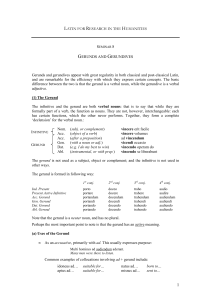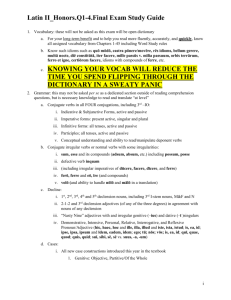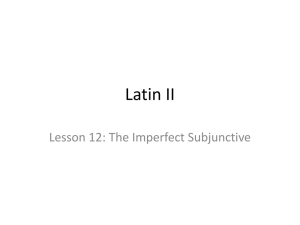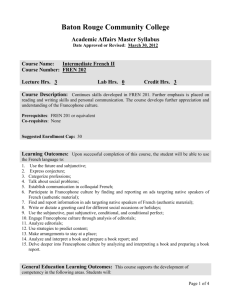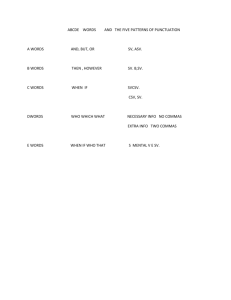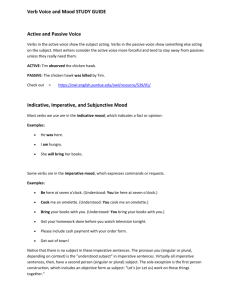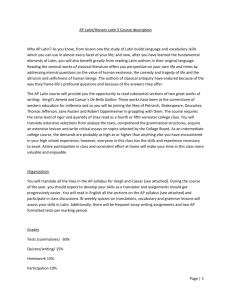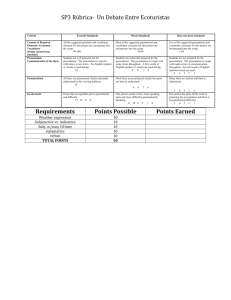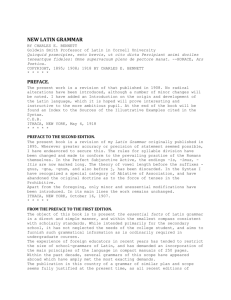answer key - WordPress.com
advertisement
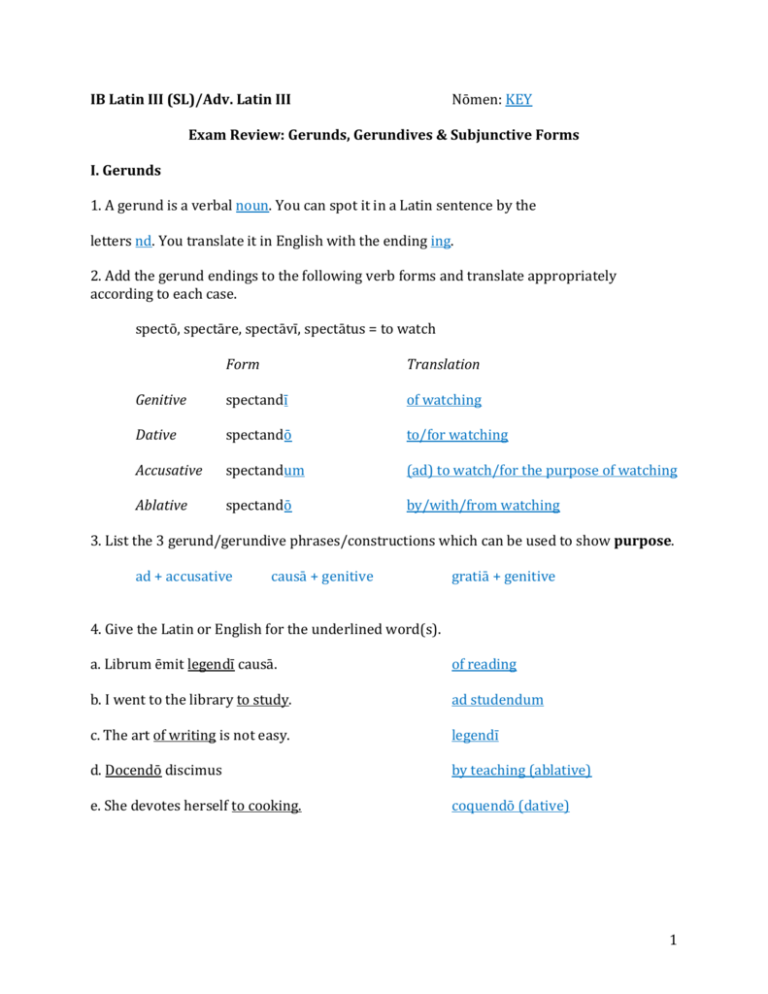
IB Latin III (SL)/Adv. Latin III Nōmen: KEY Exam Review: Gerunds, Gerundives & Subjunctive Forms I. Gerunds 1. A gerund is a verbal noun. You can spot it in a Latin sentence by the letters nd. You translate it in English with the ending ing. 2. Add the gerund endings to the following verb forms and translate appropriately according to each case. spectō, spectāre, spectāvī, spectātus = to watch Form Translation Genitive spectandī of watching Dative spectandō to/for watching Accusative spectandum (ad) to watch/for the purpose of watching Ablative spectandō by/with/from watching 3. List the 3 gerund/gerundive phrases/constructions which can be used to show purpose. ad + accusative causā + genitive gratiā + genitive 4. Give the Latin or English for the underlined word(s). a. Librum ēmit legendī causā. of reading b. I went to the library to study. ad studendum c. The art of writing is not easy. legendī d. Docendō discimus by teaching (ablative) e. She devotes herself to cooking. coquendō (dative) 1 II. Gerundives 1. A gerundive is a verbal adjective. You can spot it in a Latin sentence by the letters nd. It uses 1st/2nd declension endings. 2. Underline the gerundive in each sentence and give its gender, number, and case. a. Eō ad schōlam linguae Latīnae discendae causā. feminine singular genitive b. Librum scrīpsit dē lībertāte dēfendendā. feminine singular ablative c. Surgit virōrum vidēndōrum grātiā. masculine plural genitive d. Ad pācem petendam vēnērunt. feminine singular accusative e. Multum librīs legendīs discimus. masculine plural ablative 3. Translate sentence d above. They came to seek peace/for the purpose of seeking peace. 4. In the gerundive of obligation, the dative of agent is used instead of the usual ablative of agent. 5. Translate this sentence with a gerundive of obligation in 4 different ways. Hōc mihi faciendum erat. This was to be done by me. This had to be done by me. This should have been done by me. I had to do this. 6. Write whether the underlined word in each sentence is a gerund or gerundive. a. Legēs senātōribus scrībendae erant. gerundive b. Praseidium oppidī dēfendendī causā comparābat. gerundive c. Cōgitandō eōs superāvit. gerund d. Vēnimus ad vōcem audiendam. gerundive c. Nōn est tempus loquendī. gerund 2 III. Subjunctive Forms 1. Subjunctive forms can be found in what 4 tenses? present, imperfect, perfect, pluperfect 2. What “sentence” do we use for present subjunctive forms? How does it work? “Let’s eat caviar” trade out vowels in order for the 4 conjugations 3. How do you form the imperfect subjunctive?present active infinitive (2nd PP) + endings 4. What principal part do you use to form the perfect and pluperfect active subjunctive? 3rd 5. What principal part do you use to form the perfect and pluperfect passive subjunctive? 4th 6. Write out the 6 present subjunctive forms of the verb sum, esse, fuī, futūrus = to be. sim simus sis sitis sit sint 7. Verb synopsis: write all the subjunctive forms. Translate those marked with an *asterisk. audiō, audīre, audīvī, audītus = to hear 2nd plural Active Present Imperfect Perfect Pluperfect Passive audiātis audiāminī *audīretis y’all were hearing audīreminī audīveritis audītī sitis audīvīssetis *audītī essetis y'all had been heard 8. Which of the following could also be an indicative verb form? (future perfect active) a. invēnissem b. cēperit c. salutāverim d. posuerim 9. Which of the following could also be an indicative verb form? (future active) a. portem b. sentiat c. maneātis d. dūcam 3


